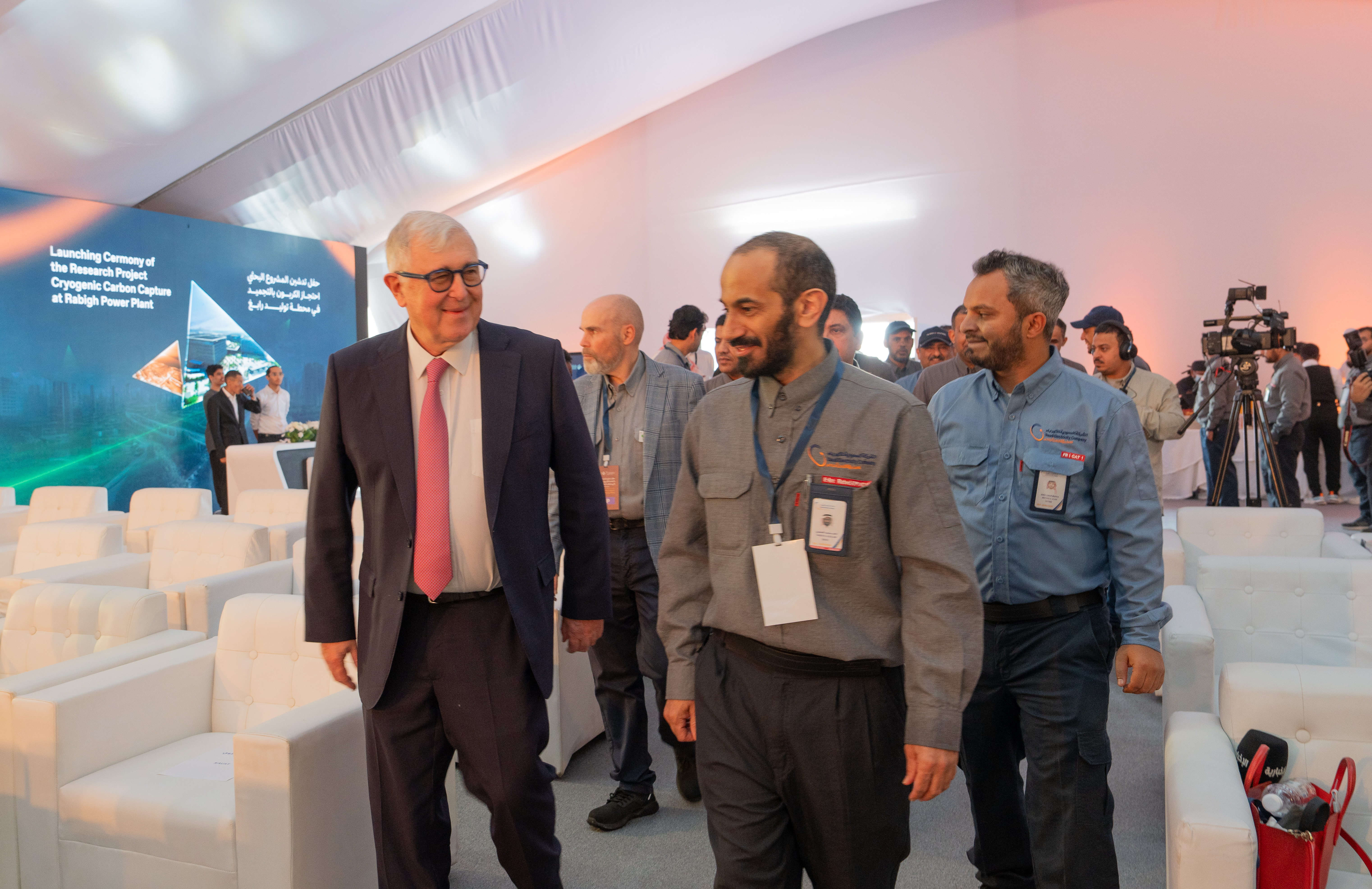SEC and KAUST supporting Saudi to reach carbon reduction targets with new technology at Rabigh

Saudi Electricity Company (SEC) and King Abdullah University of Science and Technology (KAUST) are pushing forward with plans to support the Kingdom’s net zero carbon goals, delivering the second innovative technology in a wider plan to use cryogenic carbon capture to lower emissions from power plants.
On November 19, SEC and KAUST commenced a pilot study at SEC’s power plant in Rabigh, demonstrating a world-first cryogenic technology that captures multiple pollutants and greenhouse gases, including carbon dioxide, released during the energy production process.
The uniqueness of the carbon capture technology used at Rabigh is that it is a single system, capable of capturing multiple pollutants, including carbon dioxide, unlike current capture technologies, which require distinct systems for each pollutant and gas, thus achieving a world first. The system’s streamlined post-processing also has a much smaller environmental footprint and substantially lowers costs.
KAUST President Professor Sir Edward Byrne comments on KAUST leading the Kingdom on its journey toward emissions reduction “SEC and KAUST have taken a significant step toward delivering a real-world solution in terms of carbon capture for Saudi Arabia. The deployment of this technology at Rabigh, along with our Duba carbon capture pilot plant, lowers the Kingdom’s carbon footprint and offers a bridge to a green energy future.”
The Rabigh pilot study demonstrates a portable cryogenic system that can capture more than 98% of the carbon dioxide from the flue gas—a feat unmatched by competing technologies. Further, it captures other pollutants – sulfur dioxide, nitrogen oxides and particulate matter.
Khalid bin Salem Al Ghamdi, Acting CEO of SEC, said: “At SEC, we are firmly committed to supporting the sustainability targets of the Kingdom's Vision and moving towards a sustainable energy future. Our collaboration with KAUST in developing cryogenic carbon capture technology clearly demonstrates this commitment. By investing in this innovative technology, we seek to set new standards in reducing greenhouse gas emissions, improving energy efficiency, and minimizing environmental impact. The pilot project at the Rabigh plant represents a major milestone for SEC and a pivotal step in achieving the Kingdom's ambitious carbon emission reduction goals under the Saudi Green Initiative. Together with KAUST, we are proud to create innovative solutions that bring us closer to a sustainable future for our country and the world.”
Cryogenic carbon capture has attracted attention worldwide for its high rate of carbon capture and lower cost and energy. Moreover, studies have shown that retrofitting existing power plants, like the many across Saudi Arabia, with cryogenic carbon capture can be less expensive than current alternatives.
In a separate project, as part of the wider plan for cleaner energy power plants, KAUST is also on track to deliver a first-of-a-kind 30-tonne/day CO2 capture system in late 2026 at the Green Duba Integrated Solar Combined Cycle Power Plant. The Ministry of Energy is the key partner in that initiative.
Saudi Arabia aims to reduce carbon emissions by 278 mtpa by 2030 as part of the Saudi Green Initiative (SGI). SGI is steering a range of ambitious initiatives that will reduce emissions. These include investing in new energy sources, improving energy efficiency, and developing a carbon capture and storage program, such as KAUST’s innovative technology studies.

